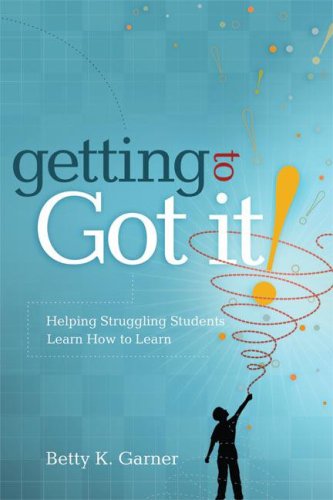

Most ebook files are in PDF format, so you can easily read them using various software such as Foxit Reader or directly on the Google Chrome browser.
Some ebook files are released by publishers in other formats such as .awz, .mobi, .epub, .fb2, etc. You may need to install specific software to read these formats on mobile/PC, such as Calibre.
Please read the tutorial at this link. https://ebooknice.com/page/post?id=faq
We offer FREE conversion to the popular formats you request; however, this may take some time. Therefore, right after payment, please email us, and we will try to provide the service as quickly as possible.
For some exceptional file formats or broken links (if any), please refrain from opening any disputes. Instead, email us first, and we will try to assist within a maximum of 6 hours.
EbookNice Team

Status:
Available4.4
11 reviews
ISBN 10: 1416606084
ISBN 13: 9781416606086
Author: Betty K Garner
It's one of the great mysteries of teaching: Why do some students "get it" and some students don't?
In this book, Betty K. Garner focuses on why students struggle and what teachers can do to help them become self-directed learners. Difficulty reading, remembering, paying attention, or following directions are not the reasons students fail but symptoms of the true problem: underdeveloped cognitive structures—the mental processes necessary to connect new information with prior knowledge; organize information into patterns and relationships; formulate rules that make information processing automatic, fast, and predictable; and abstract generalizable principles that allow them to transfer and apply learning.
Each chapter focuses on a key cognitive structure and uses real-life accounts to illustrate how learners construct meaning by using recognition, memorization, conservation of constancy, classification, spatial orientation, temporal orientation, and metaphorical thinking. The author's simple techniques stress reflective awareness and visualization. It's by helping students to be conscious of what their senses are telling them, encouraging them to visualize the information for processing, and then prompting them to ask questions and figure out solutions on their own that teachers can best help students develop the tools they need to
* Gather, organize, and make sense of information,
* Become cognitively engaged and internally motivated to achieve, and
* Experience learning as a dynamic process of creating and changing.
Suggestions for using these techniques in daily classroom practice, advice on lesson planning for cognitive engagement, and guidelines for conducting reflective research expand this book's practical applications. Use it not only to help struggling students break through hidden barriers but to empower all students with tools that will last a lifetime.
gettin it on book
the getting up song
getting book
got to know the books
what is the book getting over you about
i've got 2 books song
Tags: Betty K Garner, Struggling, Students